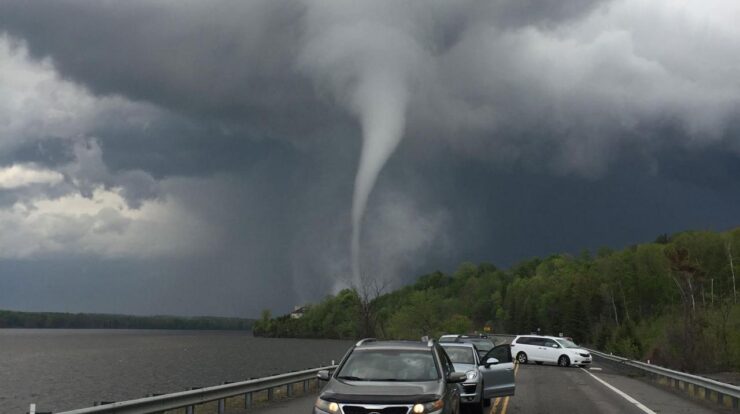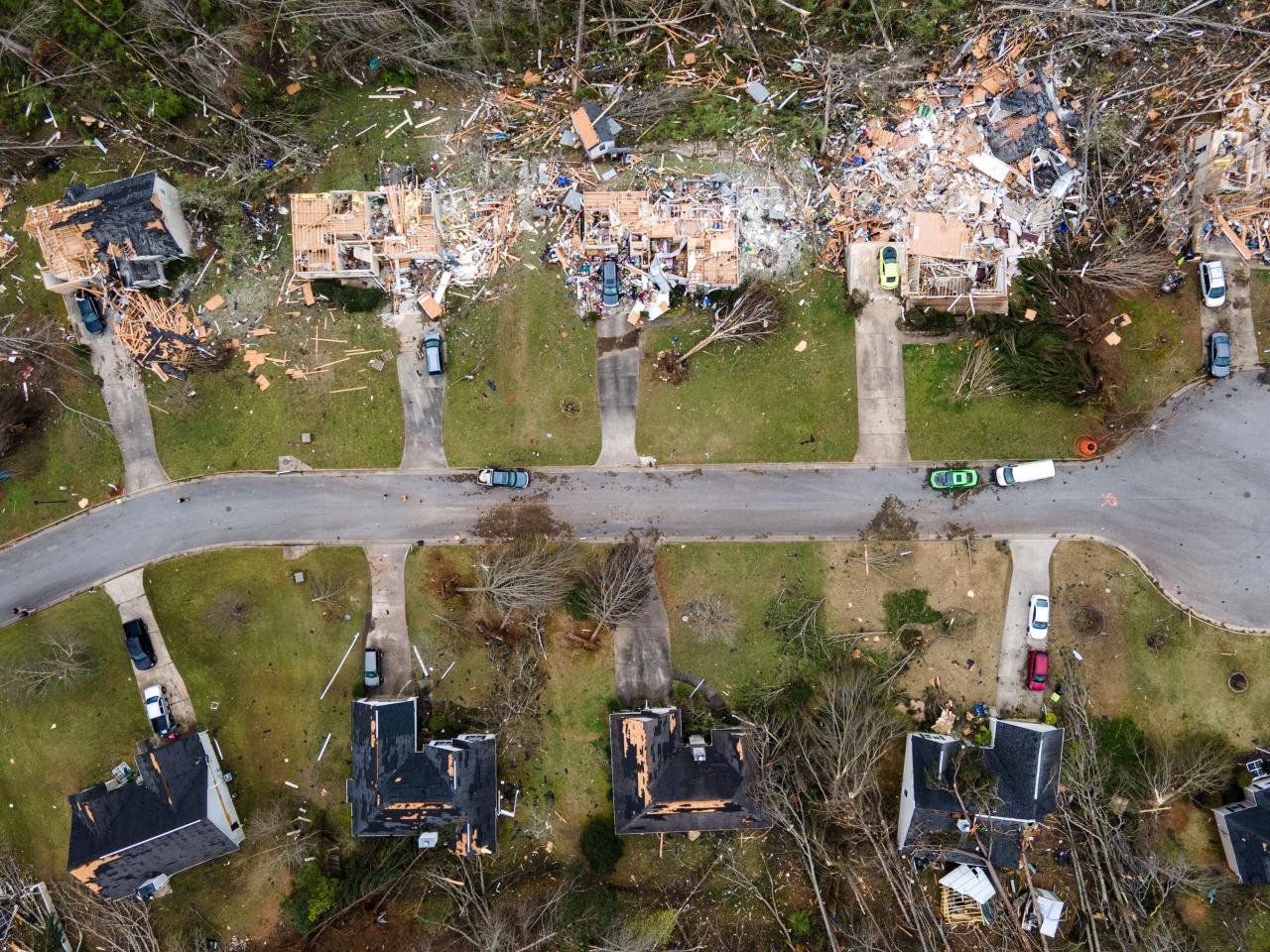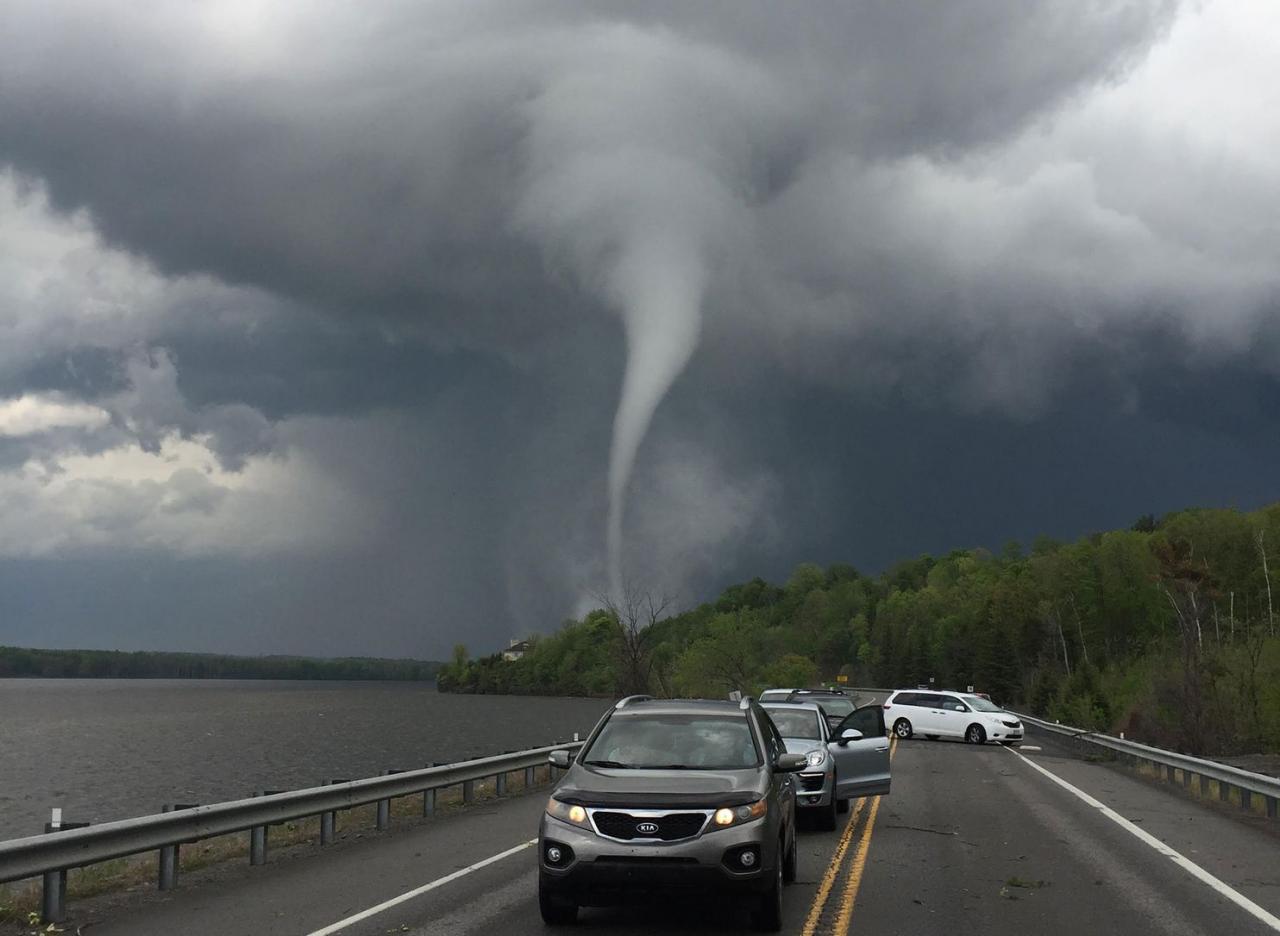
Tornadoes, violent and unpredictable weather phenomena, continue to pose significant threats worldwide. With their devastating force, they can leave behind a trail of destruction, impacting communities and economies alike. This article delves into the current state of tornadoes today, exploring their causes, consequences, forecasting methods, and preparedness strategies.
Tornadoes are not isolated events; they occur in various regions across the globe, each with its unique characteristics and patterns. Understanding the global distribution and seasonal variations of tornadoes is crucial for effective preparedness and mitigation efforts.
Overview of Tornadoes Today
Tornadoes, violent rotating columns of air that extend from the base of a thunderstorm to the ground, continue to pose a significant threat to communities worldwide. The frequency and intensity of tornadoes have been the subject of ongoing research and discussion.
In recent years, there has been a noticeable increase in the number of tornadoes reported, particularly in the United States. According to the National Oceanic and Atmospheric Administration (NOAA), the average annual number of tornadoes in the U.S. has risen from around 1,200 in the 1990s to over 1,500 in the past decade.
This increase has been attributed to factors such as climate change and improved detection methods.
The intensity of tornadoes has also been on the rise. The number of tornadoes rated EF4 or EF5 (the highest categories on the Enhanced Fujita Scale) has increased significantly in recent years. These powerful tornadoes can cause catastrophic damage and loss of life.
Causes and Formation of Tornadoes

Tornadoes form when warm, moist air from the Gulf of Mexico collides with cold, dry air from the north. The warm air rises, creating an updraft. As the updraft intensifies, it begins to rotate due to the Coriolis effect. The rotating updraft then draws in more warm air, which further intensifies the rotation.
If the updraft becomes strong enough, it can extend all the way to the ground, forming a tornado.
The most common type of tornado is the supercell tornado. Supercell tornadoes are long-lived and can produce very strong winds. They are often associated with large hail and flash flooding.
Other types of tornadoes include landspout tornadoes and waterspouts. Landspout tornadoes form over land, while waterspouts form over water. Both types of tornadoes are typically weaker than supercell tornadoes.
Impact and Consequences of Tornadoes

Tornadoes can have a devastating impact on communities. They can cause widespread damage to homes, businesses, and infrastructure. Tornadoes can also lead to loss of life. In the United States, tornadoes are the deadliest type of severe weather.
The economic costs of tornadoes can be significant. A single tornado can cause billions of dollars in damage. In addition to the direct costs of repairing or replacing damaged property, tornadoes can also lead to indirect costs, such as lost productivity and business disruption.
Tornadoes can also have a long-term impact on affected areas. The destruction of homes and businesses can lead to population loss and economic decline. Tornadoes can also damage natural resources, such as forests and wetlands.
Forecasting and Detection of Tornadoes
The National Weather Service (NWS) uses a variety of methods to forecast and detect tornadoes. These methods include:
- Weather radar: Weather radar can detect the rotation in the atmosphere that can lead to tornadoes.
- Satellite imagery: Satellite imagery can be used to track the development of thunderstorms that have the potential to produce tornadoes.
- Spotter networks: Spotter networks are groups of volunteers who report tornadoes and other severe weather events to the NWS.
The NWS issues tornado warnings when there is a imminent threat of a tornado. Tornado warnings are typically issued for areas that are within 10 miles of a tornado.
The accuracy of tornado forecasts has improved significantly in recent years. However, tornadoes can still be difficult to predict, and there is always the potential for false alarms.
Preparedness and Mitigation Strategies
There are a number of things that people can do to prepare for and mitigate the risks associated with tornadoes.
- Have a plan: Develop a plan for what to do in the event of a tornado warning. This plan should include a safe place to go, such as a basement or interior room on the lowest floor of your home.
- Stay informed: Stay informed about the weather forecast and be aware of any tornado warnings that are issued for your area.
- Take shelter: If you are in a tornado warning, take shelter immediately in a safe place.
- Reinforce your home: There are a number of things you can do to reinforce your home against tornadoes, such as installing storm shutters and reinforcing your roof.
Community-based initiatives and government programs can also play a role in tornado preparedness. These initiatives can help to educate the public about tornadoes, provide resources for tornado victims, and support research into tornado science.
Research and Advancements in Tornado Science
There has been significant progress in tornado science in recent years. This progress has been driven by the development of new technologies, such as Doppler radar and numerical weather prediction models.
Doppler radar can detect the velocity of the wind in the atmosphere. This information can be used to track the development of tornadoes and to estimate their intensity.
Numerical weather prediction models are computer models that can simulate the atmosphere. These models can be used to forecast the weather and to predict the likelihood of tornadoes.
The research and advancements in tornado science have led to improved tornado forecasting and warning systems. These systems have helped to save lives and property.
Global Distribution and Patterns of Tornadoes: Tornadoes Today
Tornadoes can occur anywhere in the world, but they are most common in the Great Plains of the United States, the central and eastern regions of Argentina, and the northern regions of Australia.
In the United States, tornadoes are most common in the spring and summer months. In Argentina, tornadoes are most common in the summer and fall months. In Australia, tornadoes are most common in the spring and winter months.
The frequency and intensity of tornadoes can vary from year to year. This variability is due to a number of factors, including climate change and natural climate cycles.
Historical Tornadoes and Case Studies
There have been many notable tornadoes throughout history. Some of the most famous tornadoes include:
- The Tri-State Tornado: The Tri-State Tornado was a long-tracked F5 tornado that occurred in the United States in 1925. The tornado killed 695 people and injured over 2,000.
- The Moore Tornado: The Moore Tornado was an EF5 tornado that occurred in the United States in 2013. The tornado killed 24 people and injured over 300.
- The Joplin Tornado: The Joplin Tornado was an EF5 tornado that occurred in the United States in 2011. The tornado killed 161 people and injured over 1,000.
Case studies of historical tornadoes can provide valuable insights into the behavior of these storms and the impacts they can have on communities.
Final Wrap-Up
Tornadoes remain a force of nature that demands our attention and respect. By staying informed about their causes, impacts, and forecasting methods, we can better prepare ourselves for these powerful storms. Additionally, ongoing research and advancements in tornado science hold the potential to enhance our ability to predict and mitigate their destructive effects, safeguarding communities and lives worldwide.
Common Queries
What are the most tornado-prone regions in the world?
The central United States, known as Tornado Alley, experiences a high frequency of tornadoes. Other regions include the Great Plains, southeastern Australia, and parts of Argentina.
How can I prepare for a tornado?
Have an evacuation plan, identify safe shelters, and stay informed about weather forecasts. Consider building a tornado shelter or reinforcing your home with tornado-resistant materials.
What should I do during a tornado?
Seek shelter immediately in a basement or interior room on the lowest floor. Stay away from windows and exterior walls. If outdoors, lie flat in a ditch or low-lying area and cover your head with your hands.





